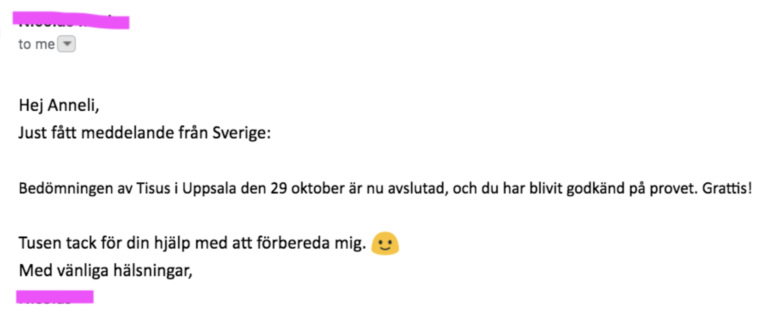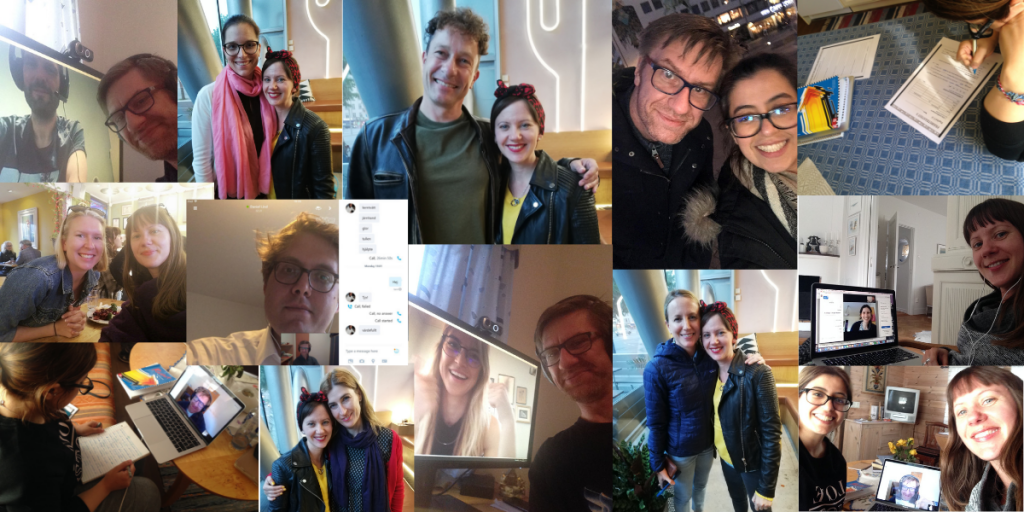
I'm a Swedish intermediate - can you help?
If you’re an intermediate, you are somewhere at level B1 or B2.
So what’s next? What should you do to improve your Swedish? Here are some recommendations for how you can improve.
1. Anmäl dig till NOW ROLL WE
NOW ROLL WE
Learn Swedish. Literally.
Learn through literal English translations in a brain-friendly way.
Perfect for late beginners and early intermediates.
Decode Swedish along with Anneli, learn Swedish pronunciation and reductions, and practice Active & Passive Listening.
*Self-paced with live support*
- Training Programme
- Guided decoding
- Active and Passive Listening
- Smart (literal) flashcards
- Live Q&A's
- Exclusive online community
- Continued access to lives and all materials
- Learn while you giggle
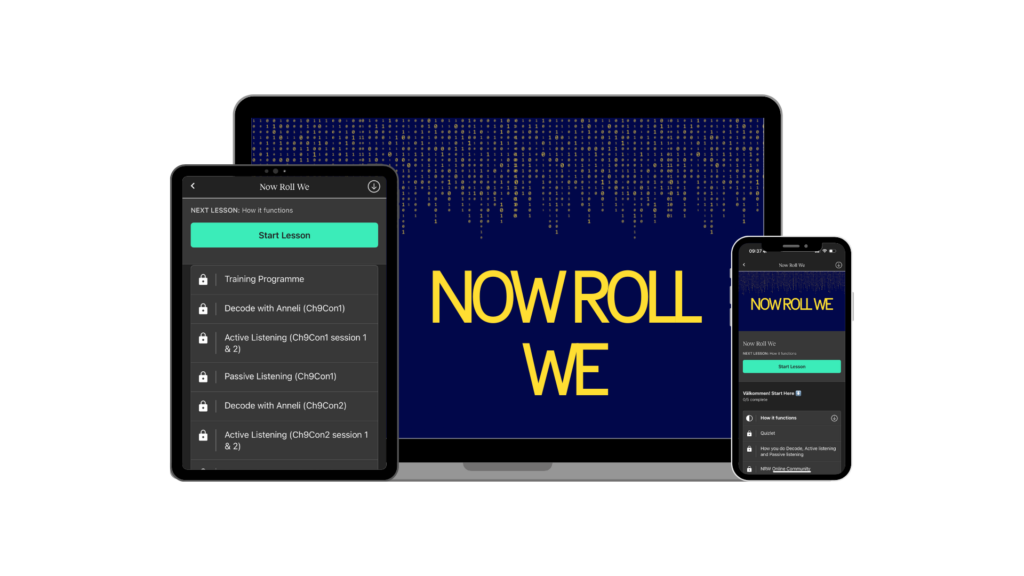
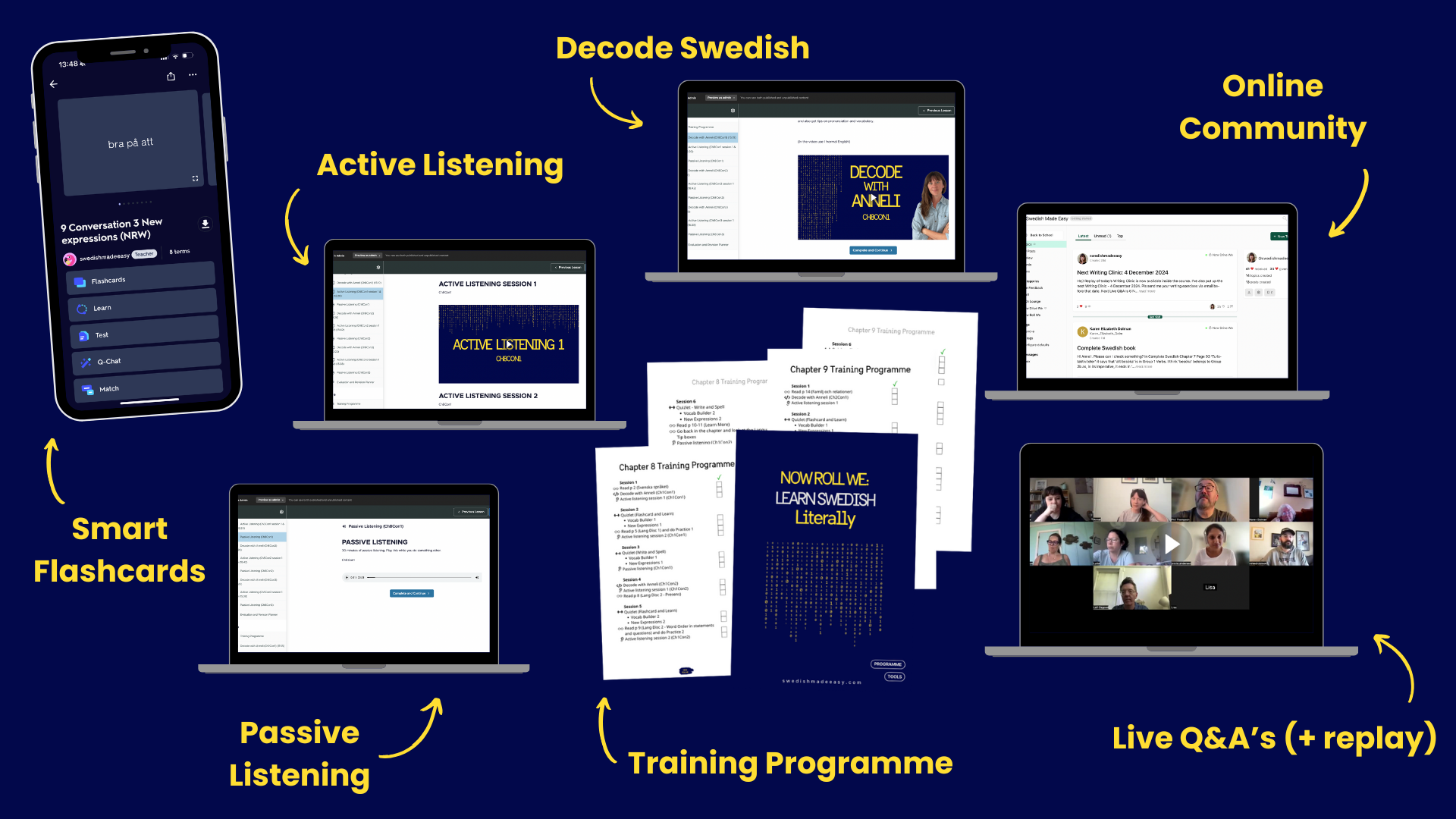
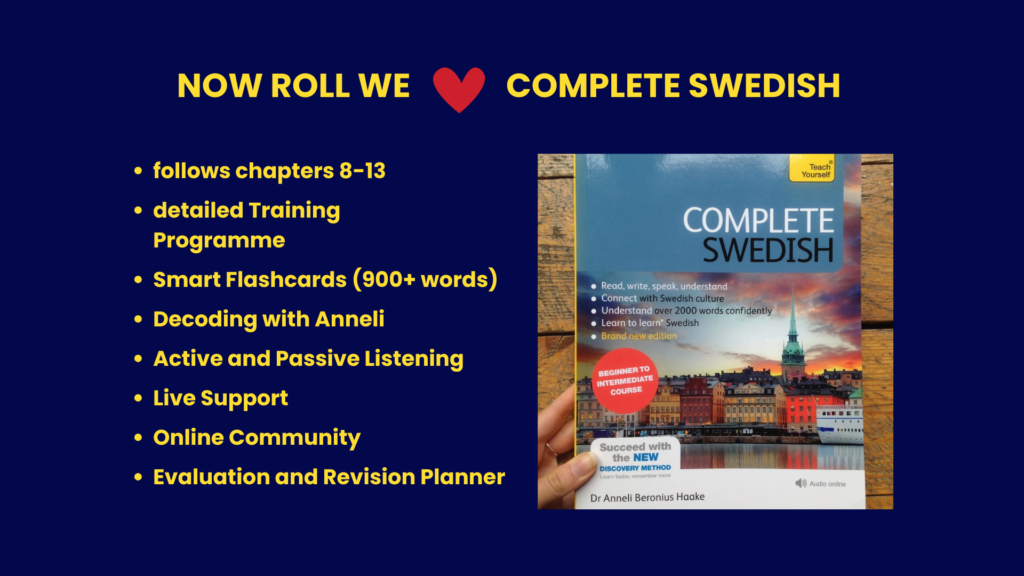
2. Om du tycker att verb är svåra, anmäl dig till Verbs Bootcamp
Swedish Verbs 101 Bootcamp
Nail the most important verbs once and for all!
Our popular 5 week intense bootcamp course. Follow our unique training programme with exercises circuits to nail 50 verbs in all 5 forms.
*Intensive course with deadline*
- Learn/review the 50 most common Swedish verbs in all forms
- Unique bootcamp Weekly Programme with exercise circuits, Warm Up & Cool Down
- All you need to know about the 5 main verb forms
- Quizlet lists with example sentences for you to drill
- Access to Q&A videos
- Cheat sheets and guides to the verbs and their forms
- Estimated study hours per week: 6-8 hours
- Course access length: 6 months from purchase
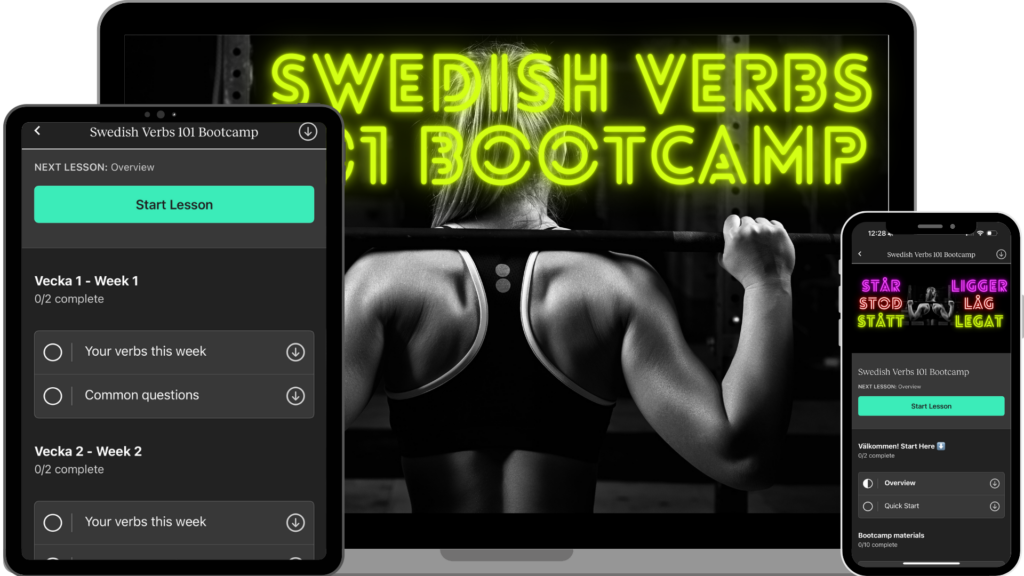
3. Krydda till din svenska med 100 Svenska Adjektiv
100 Svenska Adjektiv
Spice up your Swedish
Adjectives help us describe. Without adjectives, language becomes quite dull.
In this course, you will learn 100 common Swedish adjectives. You will learn the forms of adjectives (basic form, T-form, and A-form). You will also have example sentences for all forms, along with additional comments on meaning, exceptions, and suggestions for which prepositions that can be used. Plus plenty of exercises.
- 100 common Swedish adjectives
- Basic forms, T-forms and A-forms
- Examples and comments about context and meaning
- Grammar exercises
- Vocabulary exercises
- Learn 18 idiomatic expressions with colours
- All instructions in Swedish and English
- All instructions in Swedish and English

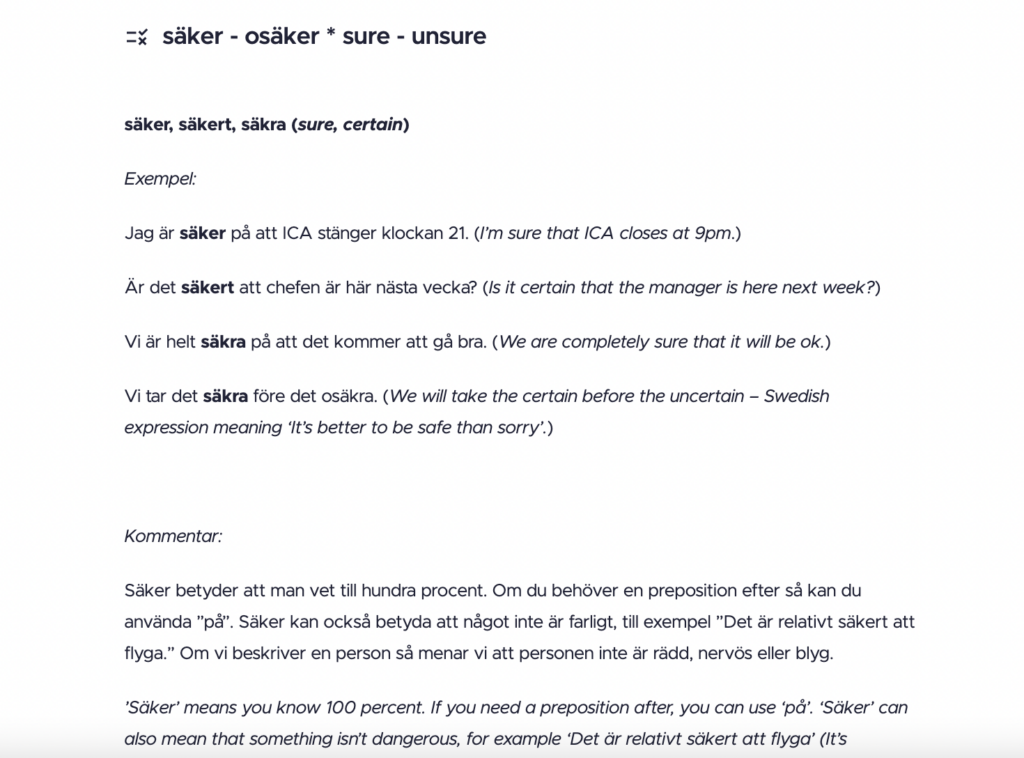
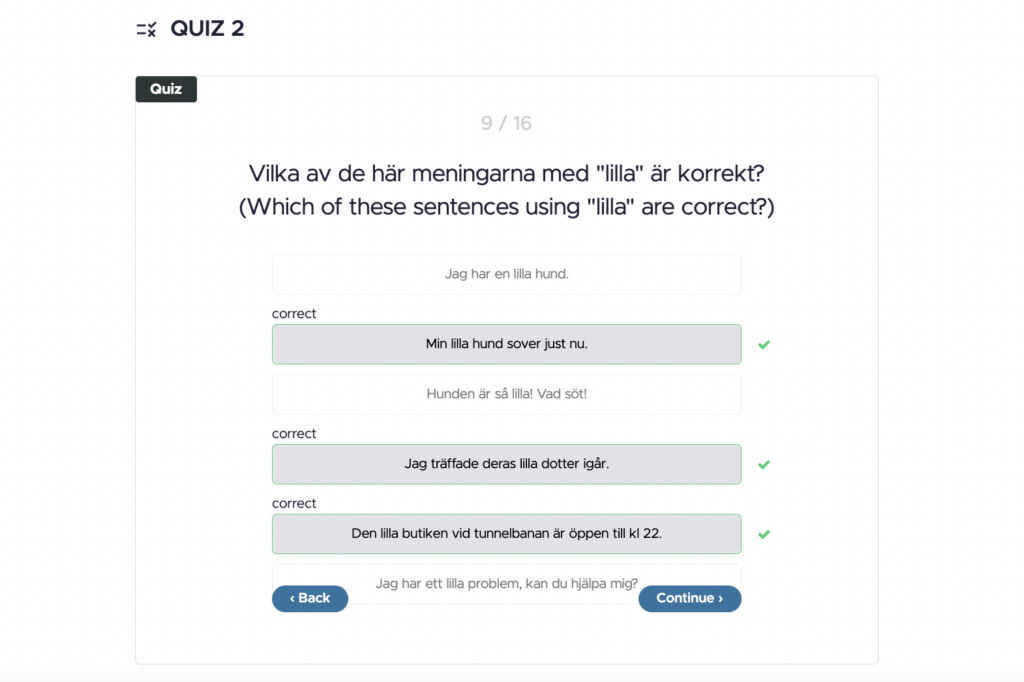
4. Förbättra ditt uttal med Tone Your Swedish
TONE YOUR SWEDISH
Unlock Swedish pronunciation and melody
Our comprehensive course, Tone Your Swedish, unlocks the secrets of impeccable pronunciation, authentic Swedish rhythm and intonation, and the ability to speak Swedish with finesse.
*Comprehensive framework*
- Unique MRI videos for muscle coordination training
- 70+ videos with guidance and practice
- All 18 vowel sounds
- All 25 consonant sounds
- Stress, melody and advanced pronunciation training
- Study in your own time from home
- Audio in Swedish with English and Swedish subtitles
- Downloadable PDF's for anatomy and pronunciation guidance
- Vowels and Consonant sections now available to buy separately
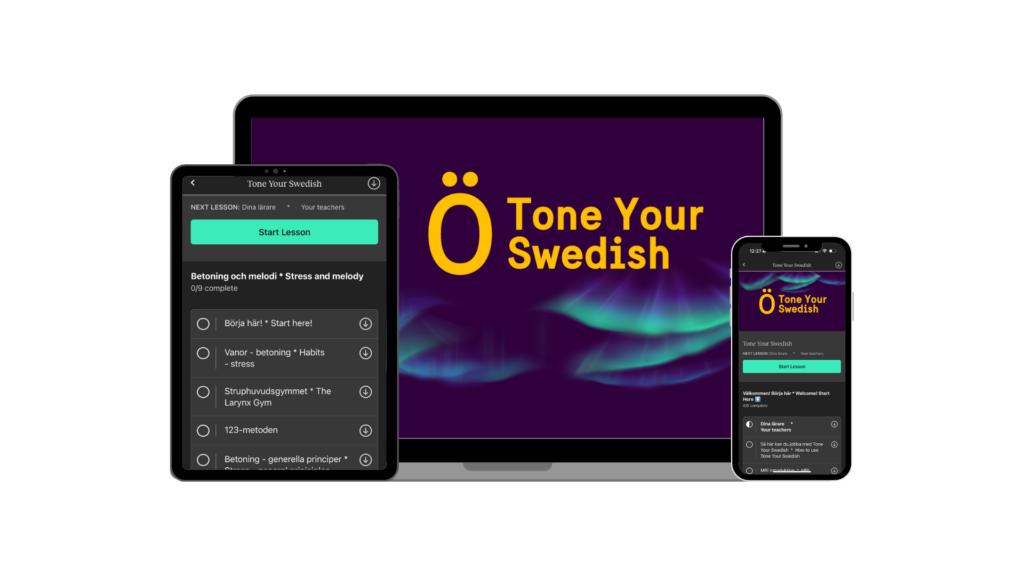
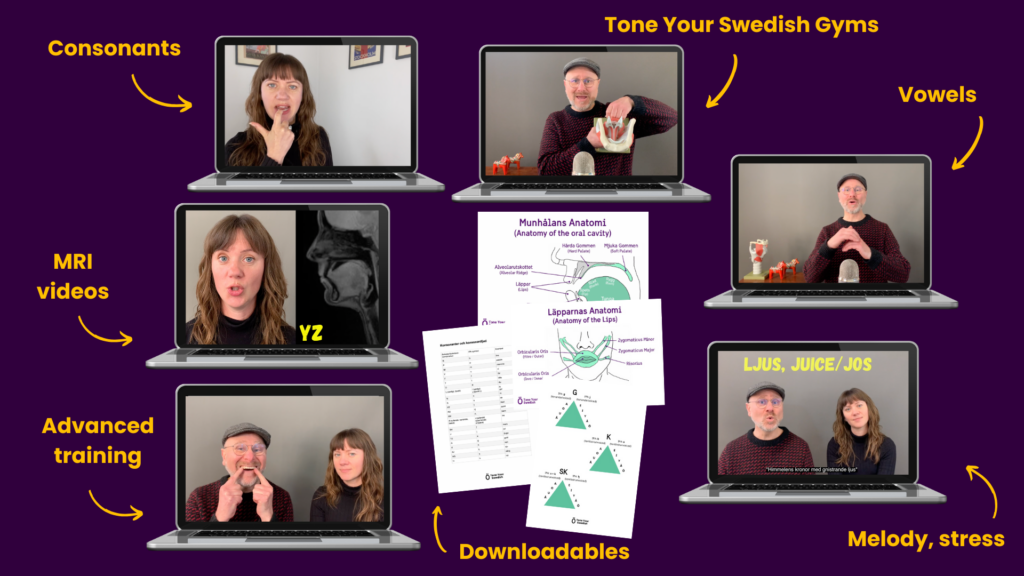

5. Börja prata med Snacka Fritt
SNACKA FRITT
Konversationsträning med support
Vill du träna på att prata svenska hemifrån?Fikar du ensam? Har du ingen att prata svenska med? Fixa en kopp kaffe och kom och Snacka Fritt med oss!
I Snacka Fritt är allt på svenska, men du behöver inte alls prata perfekt svenska.
Snacka Fritt är till för att du ska kunna förbättra din talade svenska.
*Börja använda din svenska*
- Träna på att prata spontan svenska i en liten grupp online
- Träffa andra studenter från hela världen
- Daniel, svensklärare, leder Snacka Fritt online via Zoom
- Låg kostnad (£10 per klass)



6. Anmäl dig till min mejlinglista, om du vill
Tips about learning Swedish
When you sign up to my email list, you'll get a few introductory emails with tips and advice on what to think about when you're learning Swedish.
After that, you'll only get the odd email when I launch a new course, or offer some good discounts on my courses.
I do not send regular newsletters, and you can unsubscribe at any time.
Tack!
You have successfully joined my Swedish Made Easy email list.
I don't know what my level is
Not to worry!
Take our Swedish test (which tests grammar and vocab), and you’ll get an approximate level.
